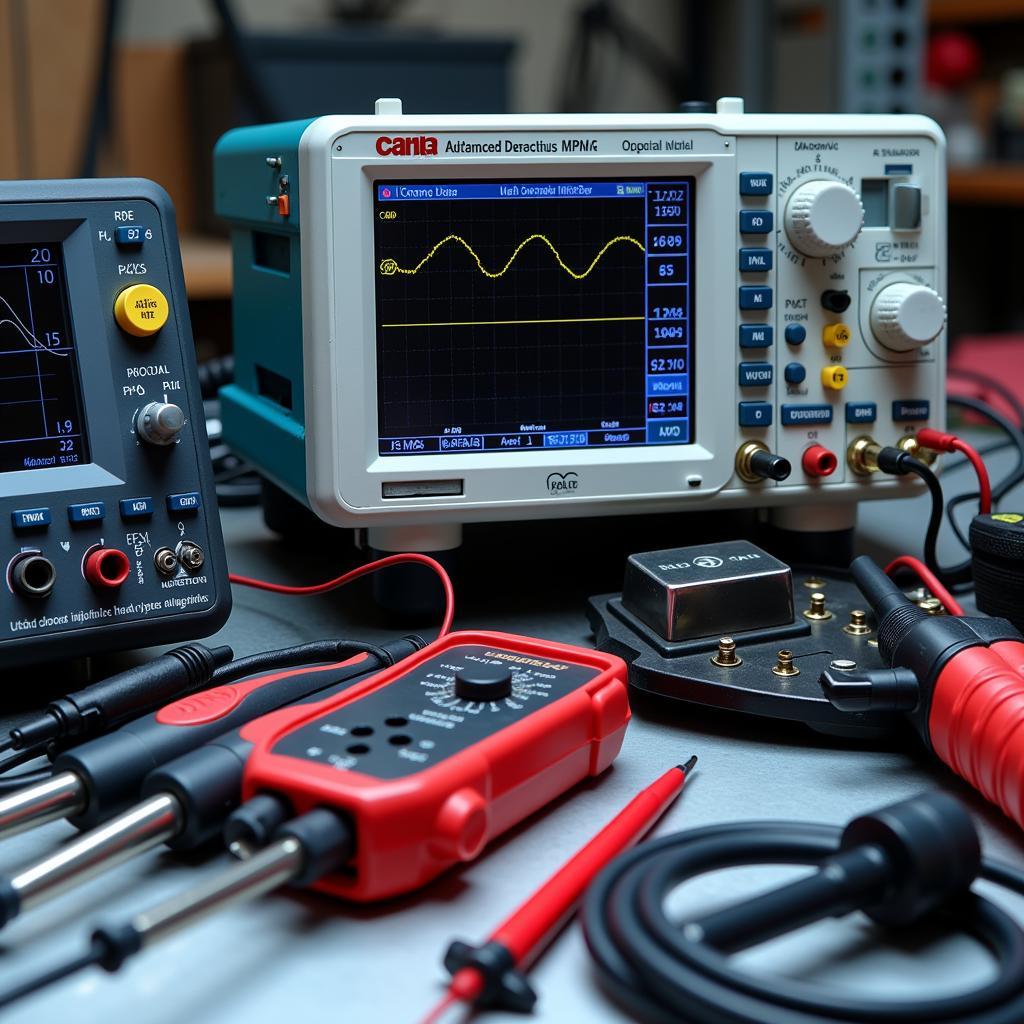Understanding automotive issues requires precise diagnostics. For English Language Learners (ELLs) working in the automotive repair industry, accessing and interpreting diagnostic tools can present unique challenges. This article explores the importance of effective diagnostic tools and strategies for ELLs to improve their comprehension and application in real-world automotive repair scenarios.
Similar to a good auto diagnostic tool, a strong foundation in automotive terminology is crucial. ELLs benefit greatly from utilizing bilingual resources and visual aids to bridge the gap between their native language and technical English. This foundation ensures accurate interpretation of diagnostic results. Developing a strong understanding of basic automotive systems like the engine, transmission, and braking system is paramount. This knowledge allows ELLs to effectively pinpoint the source of a problem, even when faced with complex technical jargon.
Overcoming Language Barriers with Diagnostic Tools
How can ELLs effectively navigate the complex language of automotive diagnostic tools? Focusing on visual cues provided by diagnostic software can be immensely helpful. Many tools use graphical representations of data, making it easier to understand trends and identify anomalies regardless of language proficiency. Building a vocabulary specific to automotive diagnostics is another key strategy. ELLs should focus on learning common diagnostic terms and abbreviations, such as DTC (Diagnostic Trouble Code), OBD-II (On-Board Diagnostics), and freeze frame data.
Practical Application of Diagnostic Tools for ELLs
What are some practical tips for using diagnostic tools in real-world scenarios? Collaborating with experienced technicians is an invaluable resource for ELLs. By working alongside native English speakers, ELLs can gain hands-on experience interpreting diagnostic results and learn how to apply this information to troubleshoot and repair vehicles. Regularly practicing with diagnostic tools on different vehicle makes and models will build confidence and familiarity. This hands-on experience will solidify their understanding of diagnostic procedures and how to interpret the data effectively.
Choosing the Right Diagnostic Tools for ELLs
How can ELLs choose the most effective diagnostic tools for their needs? User-friendly interfaces are key. Diagnostic tools with intuitive navigation and clear visual displays are particularly beneficial for ELLs. Some advanced tools offer multilingual support, providing an even greater advantage. Prioritizing tools with comprehensive documentation and support resources is crucial. Detailed manuals, online tutorials, and access to technical support can significantly enhance the learning and application process for ELLs.
Just like the best diagnostic tool for asian cars, choosing the right resource is essential. Combining theoretical knowledge with practical application is the most effective approach for ELLs mastering automotive diagnostics. This combination allows them to develop a comprehensive understanding of both the principles and the practical skills required for successful automotive repair.
Advanced Diagnostic Techniques for ELLs
What are some advanced diagnostic techniques that ELLs can utilize? Understanding data logging and analysis is a critical skill for advanced diagnostics. This involves interpreting the data captured by the diagnostic tool over time to identify intermittent faults and other complex issues. Learning about specialized diagnostic equipment, such as oscilloscopes and multimeters, can expand the range of diagnostic capabilities for ELLs. These tools allow for more in-depth analysis of electrical and electronic systems in a vehicle. This knowledge can be particularly useful when diagnosing complex issues that cannot be easily identified with standard diagnostic tools. Similar to understanding symptoms diagnostic tool, recognizing patterns is essential.
 Advanced Diagnostic Equipment for Automotive Repair
Advanced Diagnostic Equipment for Automotive Repair
Staying Updated with Diagnostic Technology
Why is it important for ELLs to stay updated with the latest diagnostic technology? The automotive industry is constantly evolving, with new technologies and diagnostic procedures emerging regularly. Staying current with these advancements is essential for ELLs to maintain their competitiveness and provide effective repairs. This continuous learning process ensures they are equipped to handle the latest vehicle models and diagnostic challenges. Active participation in industry training programs and online forums can provide valuable opportunities for ELLs to stay informed about the latest trends and best practices in automotive diagnostics.
Much like a triumph daytona diagnostic tool for a specific bike, specialized tools are sometimes necessary. This ongoing professional development will equip ELLs with the knowledge and skills needed to excel in the ever-changing automotive repair industry. By embracing continuous learning, ELLs can enhance their expertise and become valuable assets to any automotive repair team.
Conclusion
Mastering automotive diagnostic tools is essential for all technicians, and ELLs can successfully navigate this challenge by utilizing the strategies outlined in this article. By focusing on building vocabulary, utilizing visual aids, collaborating with experienced technicians, and staying updated with the latest technology, ELLs can enhance their diagnostic skills and excel in their automotive careers. Remember, effective communication and a thorough understanding of diagnostic tools are key to accurate and efficient automotive repair. Contact ScanToolUS at +1 (641) 206-8880 or visit our office at 1615 S Laramie Ave, Cicero, IL 60804, USA for further assistance. Similar to a vw vag diagnostic tool for specific makes, find the right tools for your needs.
